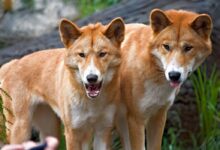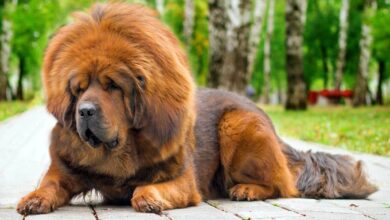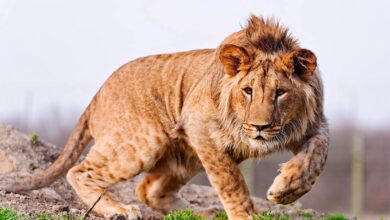The St. Bernhardog, Bernhardinner, Alpine Spaniel
A brandy lifeguard, a faithful servant of monks or a loving giant? Or maybe St. Bernard dog is a combination of all three terms? At the beginning of the 20th century, the St. Bernard dog was much lighter and smaller than it is today. St. Bernard dog has been unsuitable as a rescue dog for decades and can no longer be used as a working dog. The St. Bernard is a big, strong dog. Despite its imposing size, it is very sensitive and has a reliable character. It is very meek and loving, even with strangers. Overall, it is a well-balanced, calm dog that needs close contact with the family due to its attachment. It shows pronounced protective behavior, is self-confident and its “stubbornness” is typical for the breed.
FCI classification
- Group 2 Pinscher and Schnauzer type, Molossians, Swiss Mountain and Cattle dogs
- Section 2.2 Molossian type, Mountain type
- Without working trial
- Other names: St. Bernhardog, Bernhardinner, Alpine Spaniel, St Bernard
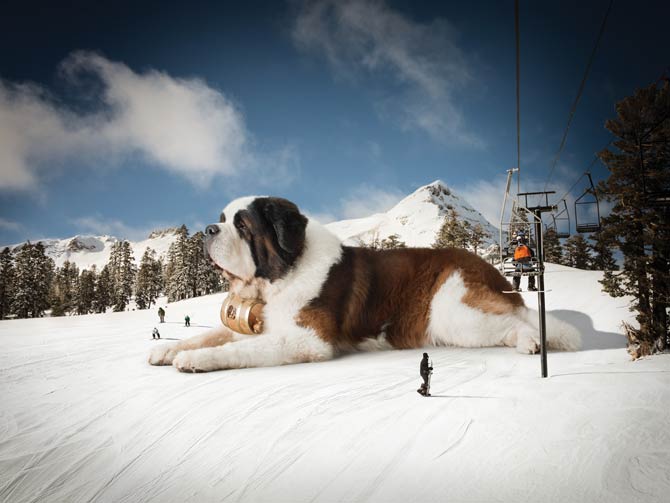
History of the breed
The ancestors of modern St. Bernard dogs share their history with Swiss mountain dogs, because they performed similar functions: they were farm, herding, hunting, working, search, rescue and defense dogs.
They are considered descendants of molossians introduced to the Alps by the ancient Romans, therefore St. Bernard dogs were classified as Molossoid breeds.
The first written records of the breed come from 1707, from the Great St Bernard Pass, on which the monks built a shelter for travelers and pilgrims. Dogs named “Barry” and “Rutor” were “employed” at the tabernacle; they were to accompany the monks and find wanderers lost in a snowstorm or fog. Interestingly, the dogs did not receive any special training – younger dogs learned how to conduct searches and rescue operations by watching older dogs.
However, modern St. Bernard dogs differ significantly from their ancestors due to interbreeding with other races. The severe winters between 1816 and 1818 led to an increase in avalanches, killing many of the rescue and breeding dogs.
To preserve their breed, the surviving St. Bernard dogs were crossed with the Newfoundland dogs brought in 1850. The idea, however, turned out to be a flop in several respects, because the main problem of the “crosswords” was the poor rescue skills in the snow and climate of the Alps, because the long fur inherited from the Newfoundland dogs froze, becoming a very heavy.
The first breed club was established in Basel on March 15, 1884, and in the same year St. Bernard dogs became one of the first breeds to be included in the Swiss Pedigree Book, and in 1888 the breed standard was finally approved.
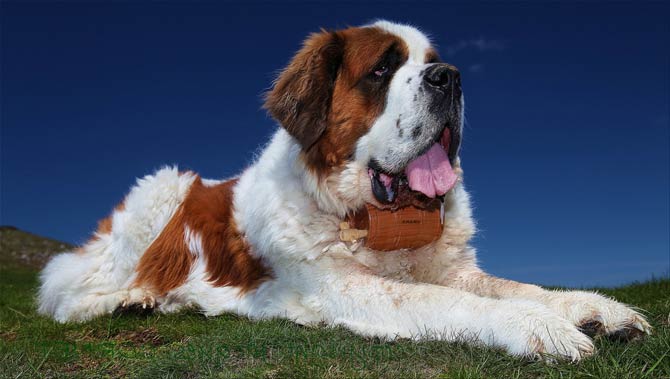
Characteristic
Appearance
One of the largest dog breeds with a weight of 64 – 120 kg (141 – 265 lb) and a height at the withers of 70 – 90 cm (28 – 35 in).
The coat can be smooth or rough, the hair closely and flatly arranged. Rough fur is characterized by high density, and the greatest abundance is on the legs and neck. The color is usually two-color, red and white, sometimes there is brindle mahogany with white. There is black on the face and ears.
There are two types of hair length within the breed:
- Shorthaired variety (Stockhaar) – fur composed of two layers: straight, dense, hard and close-fitting top coat and abundant undercoat. There are pants on the thighs, and the tail is covered with thick fur;
- Longhaired variety – medium length, straight topcoat, also dense undercoat. The shortest on the head and face; The croup and the thighs are covered with a slightly wavy coat. Feathers visible on the front legs and pants on the thighs.
Eyes with close-fitting or slightly pendulous lids, medium-sized and brown (sometimes light blue) irises. Set rather deep but appear friendly. Ears set high and wide, very hairy, soft, triangular in shape, rounded at the tips. The tail is long and heavy, it hangs low. The whole figure is strong, well-muscled and, of course, large.
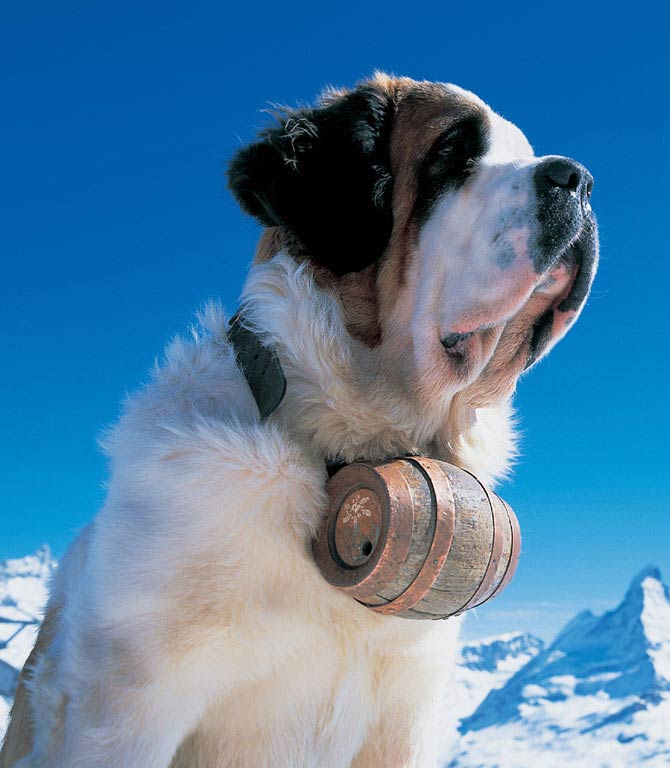
Temperament
Like all very large dogs, St. Bernard dog also needs good training, especially with other dogs, to prevent excessive shyness or possible aggression or display of territoriality. It can be the greatest threat to children – due to its large size it can easily knock over a small person. However, it can be forgiven because it is a devoted and loving dog and, if well socialized, very friendly.
Untrained in the puppy period, it can become a nuisance as an adult – even a strong man will have problems with maintaining balance with a lively and uncontrollable giant, so it is important to teach St. Bernard dog balanced behavior. Although generally not aggressive (except for dogs that are bred and trained for defense), it enjoys barking, which, combined with its size, effectively scares off potential intruders.
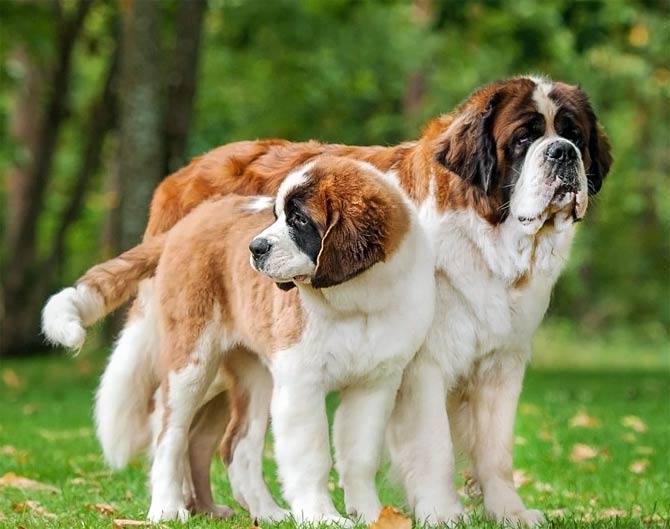
Health condition
Very fast growth and weight gain can lead to skeletal problems, especially if the animal is not given adequate food and exercise. Many St. Bernard dogs are genetically affected by dysplasia of the hip or elbow joint, and bone cancer is relatively common.
They are susceptible to eye diseases, including eyelid eversion. Other health problems include epilepsy, heart disease (dilated cardiomyopathy), and dermatitis.
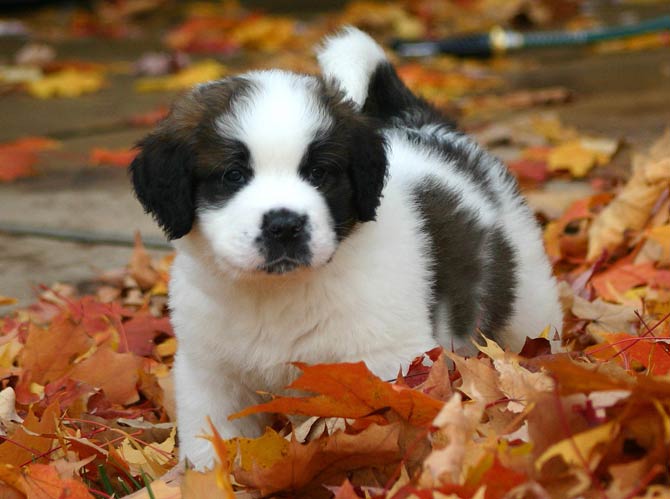
Detailed data / dimensions (size)
St. Bernard dog
- Height at the withers:
- males: 70 – 90 cm (28 – 35 in)
- females: 65 – 80 cm (25.6 – 31.5 in)
- Weight:
- males: 64 – 120 kg (141 – 265 lb)
- females: 54 to 64 kg (119 to 141 lb)
- Lifespan: 7-10 years
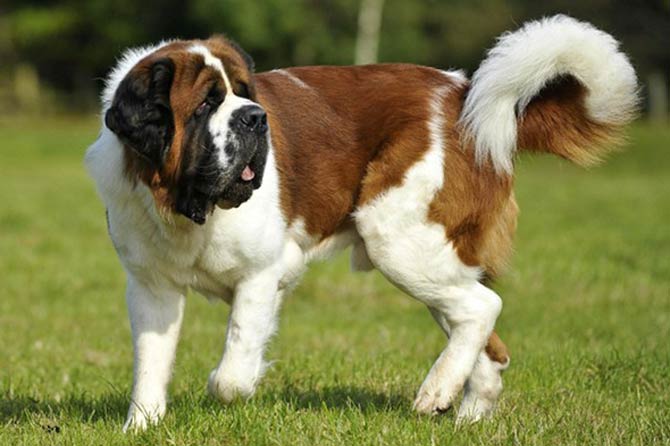
St. Bernard dog – interesting facts
- The name “Bernard” comes from the center created on the Great Pass of St. Bernard, located in the Western Alps, between Switzerland and Italy. The shelter and breed are reported to be named after the 11th-century preacher Bernard of Menthon, who was also the founder of the shelter. The name “Bernard” was not in common use until the middle of the nineteenth century, dogs of this breed were called sacred dogs, alpine mastiffs or simply Barry.
- The most famous St. Bernard dog was Barry (sometimes spelled Berry), who reportedly saved 40 to 100 people on the Great Pass. A monument in honor of the dog is located in the Cimetière des Chiens (animal cemetery) and its body has been preserved by the Bern Natural History Museum.
- Nowadays, St. Bernard dogs are no longer used as Alpine rescuers. The last recorded case of this type dates back to 1955. Back in 2004, the hostel on the Great Pass of St. Bernard had 18 St. Bernard dogs, but they were kept there because of their sentiment and tradition.
- In MGM and Warner Bros cartoons and other traditional animated films, St. Bernard dogs were depicted with casks containing brandy hanging around their necks. The alcohol was intended for the victims of avalanches who drank it to keep the body warm while waiting for the paramedics to arrive, although from a medical point of view it would be dangerous. Additionally, no records of the Great Pass have been found suggesting that St. Bernard dogs had small barrels around their necks. The emergence of this stereotype is attributed to the painter Edwin Landseer, the creator of the 19th century painting Alpine Mastiffs Reanimating a Distressed Traveller (1820). The stereotype led to the emergence of funny characters of St. Bernard dog-alcoholics drinking brandy from their own barrels.






